#Aepyornis maximus
Explore tagged Tumblr posts
Note
If you were in danger, what bird would you trust to save you / guard you from the enemy?
Oh thats an easy one!!
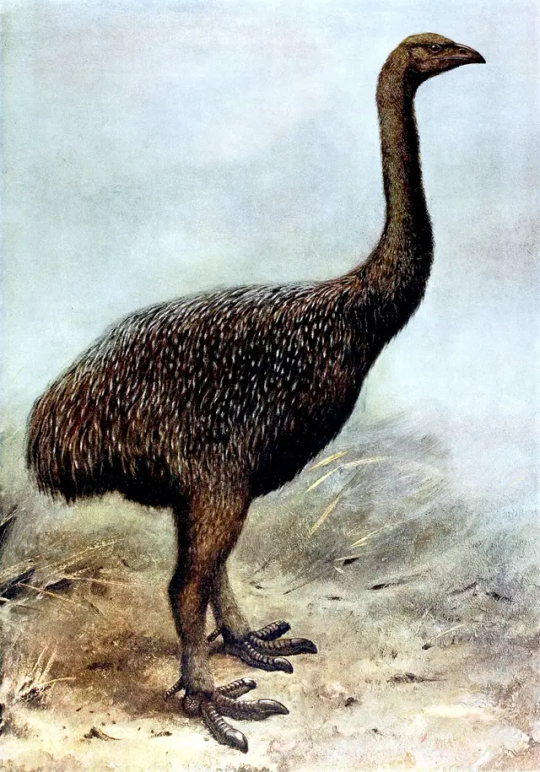
Elephant Bird (Aepyornis maximus), family Aepyornis, order Aepyornithiformes, Found in Madagascar
EXTINCT (Sometime around 1000 AD)
These huge birds reached a height of up to 3 (9.8 ft), and a weight of up to 1,000 kg (2,200 lb).
illustration by George de Lodge
#elephant bird#aepyornis#extinct#aepyornithidae#aepyornithiformes#bird#ornithology#animals#nature#madagascar
279 notes
·
View notes
Text

The CONTINUATION of a commission Aepyornis-Maximus on FA, who’s going through the process of getting a sequence of ME in some sort of Funny Cartoon Dehydrated Food + Water gag
More parts to come soon, I’m sure!
7 notes
·
View notes
Text
I bet the Elephant Bird (Aepyornis maximus) would have been a fantastic beast to barbecue over some mesquite wood chips.

Can't believe I was only born 1000 years too late to roast one of these beasts.
5 notes
·
View notes
Text


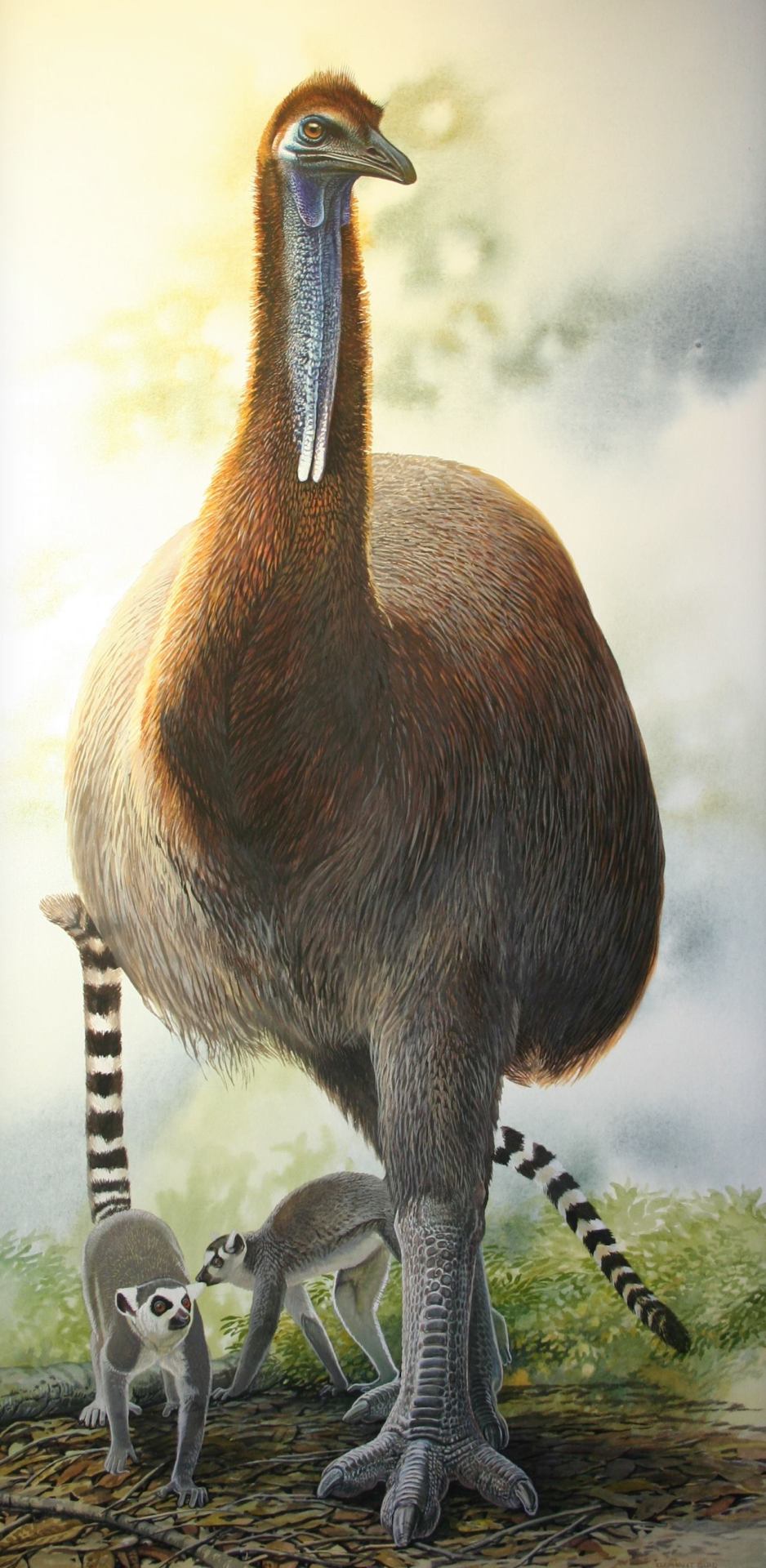

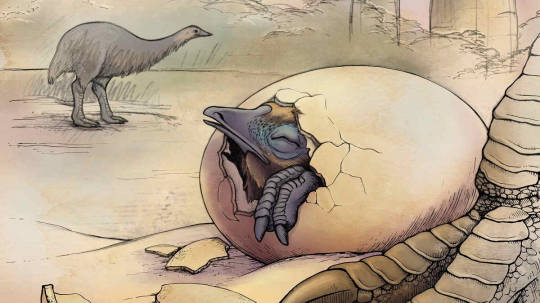

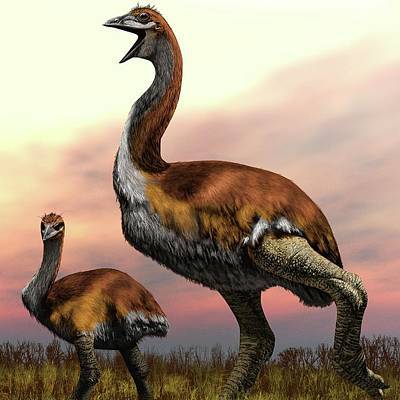
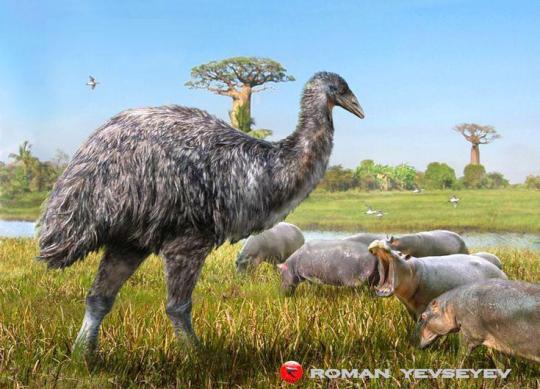
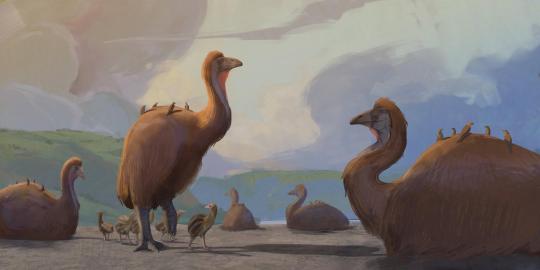
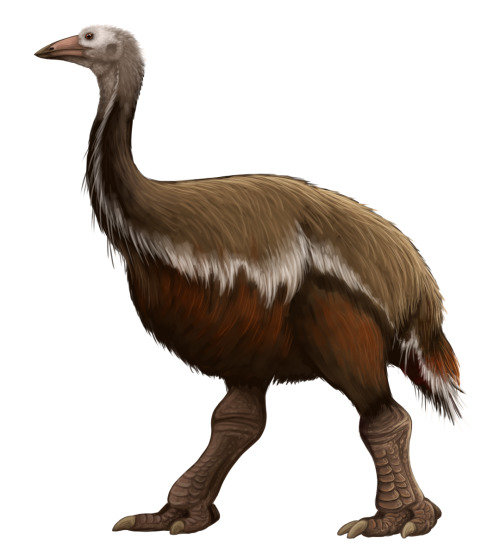

Aepynornis is an extinct genus of elephant bird which was endemic to the island of Madagascar, Aepyornis first split from its elephant bird relative the Genyornis during the Oligocene epoch some 27 million years ago and existed well into the Holocene until around just 1,000 years ago. The first remains of Aepyornis to be scientifically described were actually several partial eggs found in the mid 1800s which were found and studied before any physical remains of the birds themselves. With the type species Aepyornis maximus being established in 1851. The number of species of aepyornis has varied over the years and has been up for debate with some establishing that there are 4 species A. hildebrandti, A. gracilis, A. medius and A. maximus, or that there is only 1 species A. maximus, or that there are 2 species A. hildebrandti and A. maximus. Recently a species Aepyornis titan was placed in the separate genus Vorombe by Hansford and Turvey in 2018, however even more recent genetic testing shows that Vorombe titan to just have been a particularly large population of aepyornis maximus. With the smaller species being roughly 6.6ft (2m) tall and 520lbs (235kg) while the largest individuals reached upwards of 10ft (3m) tall and 2,200lbs (1,000kg) Aepyornis were amongst if not the largest true birds to ever live. They had heads which bore a straight, thick conical beak, long necks, and large rounded bodies with completely vestigial wings and massive robust hind legs. Studies have shown that aepyornis would have sported fairly weak eyesight but an exceptional sense of smell indicating that they may have been primarily nocturnal like there closest living relatives the kiwis of New Zealand. These giants would have dwelled in the forests of Madagascar and fed upon various fruits, leaves, twigs, bark, nuts, shrubs, and grasses fulfilling the niche of megafaunal browser and mixed feeder which is fulfilled by elephants, giraffes, bovids, and cervids on other landmasses.
Art can be found at the following links:
#pleistocene#pleistocene pride#pliestocene pride#pliestocene#ice age#bird#cenozoic#elephant bird#aepyornis#vorambe#madagascar
3 notes
·
View notes
Text
Mythological Creatures Explained by Science
Here’s an unfinished freelance article I wrote for Cracked many years ago. It was never published, but made it pretty far in the review process.
1. The Kraken was a giant squid
The legend of the Kraken is one of a huge sea monster with big tentacles that can crack ships in half, and has cropped up in Greek and Norse mythology. This fits the profile of the giant squid, albeit exaggerated.
Although no one has ever seen a giant squid alive in its natural habitat until now, humans have been clued into its existence for centuries, perhaps even longer. Giant squid carcasses will occasionally wash ashore, and there have been sightings of giant squid at the ocean’s surface. The ancient Greeks may have first described the creature in the fourth century B.C. In the first century B.C., Pliny the Elder wrote of an enormous squid in his Natural History. The animal he described had 30-foot-long arms, weighed 700 pounds and had a head “as big as a cask.” — blogs.discovery.com/show-news…
2. Griffins came from dinosaur bones
Griffins are a mythological creature with a lion’s body, and an eagle’s head and wings. It is thought to have originated from gold minors in the Gobi desert who dug up Protoceratops bones, a predecessor to the triceratops.
Protoceratops was a creature six or seven feet long, with four legs, claws, and a scary beak that looked like a huge lobster claw. Mayor speculates that ancient people may have dug up skeletons of the Protoceratops, a probable theory considering that American tourists who visited the Gobi Desert in 1992 uncovered a complete, standing dinosaur skeleton trapped in the sand. It would only take a small imaginative step for ancient prospectors, making similar finds, to think that living griffins existed and guarded their nests like protective mother birds in the same standing position. — www2.gi.alaska.edu/ScienceFo…
3. The Roc was a now extinct bird
The Roc is a giant bird from legend, that was said to dine on elephants, and was first recorded by a Westerner by Marco Polo. This bird was likely an exaggeration of Aepyornis maximus, or the Elephant Bird, which is now extinct.
The Elephant Bird (Aepyornis maximus) inhabited the island of Madagascar, off the eastern coast of Africa. Madagascar was settled around 2000 years ago by African and Indonesian peoples. Legends of the giant roc (rukh) in Arab folklore were probably based on the elephant bird. During the 9th century, Saracen and Indian traders visited Madagascar and other parts of the African coast and would have encountered these birds. In 1298, while imprisoned in Genoa, Marco Polo wrote his memoirs, covering 26 years of travel. In chapter 33, “Concerning the Island of Madagascar” he wrote that the Great Khan had sent him to investigate curious reports of giant birds. — messybeast.com/extinct/m…
4. Werewolves were serial killers
The legend of the Werewolf dates back to 1 A.D., and there are many theories on how the myth sprung up, such as an explanation of rabies, and someone to blame for dead livestock. However, a string of “werewolf” trials in medieval Europe, which all convicted cannibalistic serial killers, points at the myth being used to make sense out of disturbing human characteristics.
In 1521, a Pierre Burgot and Michel Verdun were executed as werewolves. Historical records indicate that they were a serial killer team. In 1573, again in France, another “werewolf” was executed. His name was Gilles Garnier, otherwise known as the “Werewolf of Dole.” He was a confessed serial killer. — www.historicmysteries.com/history-o…
5. Dragons were our collective fear of snakes
Dragon’s are an almost universal myth. It is so common, in fact, that respected scientists of the day still contented they must have been real, as late as the 17th century. So what could have created this universal myth? Maybe, it’s just our collective biological fears of snakes.
In ‘‘An Instinct for Dragons’’ (Routledge, 2000), Dr. David E. Jones, a professor of anthropology at the University of Central Florida in Orlando, posits a biological explanation that jibes with the Jungian notion of unconscious collective fears. He argues that the dragon image, fermented in the primal soup of man’s first nightmares, is a composite of the carnivores who fed on human ancestors when they were tree-dwelling monkeys: the pythons, the big cats and the raptors. — www.nytimes.com/2003/04/2…
6. Mermaids were straight up manatees
What we know
Ah mermaids, the half fish, half women whom, according to Disney, are little. Most of us know mermaids from a Jamaican crab extolling the virtues of being underwater via song, or maybe by the original happiness annihilating tale by Hans Christian Anderson.
However, all fiction aside, mermaids were described as fact by sailors for centuries.
What could possibly make different sailors across the years report the same creature? If you guess manatees, or read the title and then knew it was manatees, you are correct.
What they were
…in a world saturated with mermaid mythology, people sometimes think they see them in real life. When Christopher Columbus set out to sea in 1492, he had a mermaid sighting of his own; little did he know that this encounter was actually the first written record of manatees in North America. — ocean.si.edu/ocean-new…
Have you ever seen a manatee? Have you ever seen woman? Assuming the answer was ‘yes’ to both, we think you’ll readily agree that confusing one for the other is a bit of a stretch.
Yet, sailing the seven seas, for sometimes years at a time, without seeing land for months, and with only the company of other, grizzled seamen, is a lonely business for your genitals. Even if you were into men, you’d also have to be into scurvy, missing limbs, and getting pooped on by rats to get your freak on in an old time-y sailing ship, we surmise.
Combine all that with a little rum, and that giant, gray, distinctly non-human creature flaunting her stuff in the waves starts to look downright sexy.
Or maybe the myth started when a sailor decided his sexual history would sound more impressive if he’d done it with a ‘mermaid’ rather than a ‘sea cow’.
0 notes
Text



the elephant bird. the largest bird that ever lived. Vorombe Titan. The Aepyornis Maximus was also a type of elephant bird but was smaller.

these are the leg bones of the different ‘elephant birds’, the Aepyornithidae. V. Titan was fucking huge. Around 2.9 meters (9.8 feet) tall, and weighing 536-732 kg. (1,182-1,614 lbs.) the largest femur discovered unfortunately could not be assigned to a cluster because it was incomplete, but it was believed to have belonged to a bird that would’ve been around 860 kg. (1,900 lbs.), making that the largest known individual bird ever recorded. But we know more about A. Maximus, the second largest of them, because it went extinct more recently-sometime in 1500 CE. Keep that in mind.
This is one of their eggs compared to a normal egg btw

Anyways, back to what I was saying.
This is a replica model of what A. Maximus looked like. IT IS FUCKING HUGE, OKAY. AND THE V. TITAN WAS BIGGER. ABSOLUTELY FUCK OFF HUGE. I NEED YOU TO UNDERSTAND THAT. (shout-out to the coelacanth in the back btw, love u bestie but this ain’t about u today)

But I want you to now take a moment to look at the bottom right corner. And there you will see the little Kiwi bird. The grandson of the elephant bird.
Do you have any idea what kind of fucking emotions this makes me feel.
Do you think the maybe, if the elephant bird were still around, that the kiwi would maybe be able to see his grandfather? The mighty, mighty giant of birds, related directly to him, the tiny, precious, and beloved namesake of a fruit the size of your palm?



Darling tiny little Kiwi. Grandson to the greatest bird who ever lived. Baby sized in comparison, but still just as perfect.
Its highly unlikely, but I like to think that maybe, just maybe, perhaps the kiwi and the elephant bird-were they still around-would recognize one another as family, just as we humans recognize the apes as our cousins, and maybe even love each other as such.

HI IM THINKING ABOUT THE FACT THAT THE ELEPHANT BIRD WAS THE LARGEST BIRD TO EVER EXIST, AND THEIR CLOSEST LIVING RELATIVE. IS THE KIWI. I AM EXTREMELY NOT NORMAL ABOUT THIS
#THANK YOU FOR COMING TO MY 2:30 AM TED TALK. I MIGHT NEED TO GO CRY ABOUT THIS NOW.#bella gets autistic about it#bella speaks
23 notes
·
View notes
Photo



Aepyornis Egg, 17th century or earlier,
An exceptional, intact example of an Aepyornis maximus egg, with a creamy white and beautifully preserved stippled surface. Also known as elephant bird, the now extinct Aepyornis was native to the island of Madagascar.
A truly enormous creature, it measured an impressive 10 feet and could weigh up to 1200 lb. Its eggs are the largest known across all species, and specimens as large as the present example are themselves among the largest elephant bird eggs ever found.
It is believed that human activity precipitated the extinction of the elephant bird, which has been associated to the legendary Malagasy vorompatra (“marsh bird”), as well as other fabled winged creatures such as the roc of the One Thousand and One Nights.
A single Aepyornis egg could indeed provide meals for entire families and the equivalent to roughly 150 chicken eggs, making nests highly desirable targets for poaching.
Intact examples are very rare, with less than forty known specimens currently preserved in public institutions.
Height: 13 inches (33 cm)
Courtesy: Ariadne / World Atlas
#art#nature#animals#eggs#egg#aepyornis#aepyornis maximus#elephantbird#bird#elephant#madagascar#archeology#17th century#history#ariadne#worldatlas
23 notes
·
View notes
Photo

146 notes
·
View notes
Link
Size comparison of some of the largest animals that ever lived.
#tyrannosaurus rex#Purussaurus Brasiliensis#spinosaurus aegyptiacus#aepyornis maximus#titanoboa cerrejonensis#archelon ischyros#paraceratherium transouralicum#palaeoloxodon namadicus#parapuzosia seppenradensis#leedsichthys problematicus#otodus megalodon#shastasaurus sikanniensis#argentinosaurus huinculensis#blue whale#largest animals#size comparison
2 notes
·
View notes
Text
Aepyornis

By Scott Reid on @drawingwithdinosaurs
PLEASE SUPPORT US ON PATREON. EACH and EVERY DONATION helps to keep this blog running! Any amount, even ONE DOLLAR is APPRECIATED! IF YOU ENJOY THIS CONTENT, please CONSIDER DONATING!
Name: Aepyornis
Status: Extinct
First Described: 1851
Described By: I. Geoffroy Saint-Hilaire
Classification: Dinosauria, Theropoda, Neotheropoda, Averostra, Tetanurae, Orionides, Avetheropoda, Coelurosauria, Tyrannoraptora, Maniraptoriformes, Maniraptora, Pennaraptora, Paraves, Eumaniraptora, Averaptora, Avialae, Euavialae, Avebrevicauda, Pygostylia, Ornithothoraces, Euornithes, Ornithuromorpha, Ornithurae, Neornithes, Palaeognathae, Notopalaeognathae, Novaeratitae, Apterygiformes + Aepyornithihformes Clade, Aepyornithiformes, Aepyornithidae
Referred Species: A. gracilis, A. hildebrandti, A. maximus, A. medius
And now on to the Elephant Birds! Aepyornis is the larger of the two genera of elephant birds, and the largest bird in the world until it went extinct about 1,000 years ago. These birds lived entirely in Madagascar, and lived there throughout the Holocene, so from 12,000 years ago to 1,000 years ago. Genetically - so with analyses of ancient DNA still present in Aepyornis remains - it is most closely related to modern Kiwi, indicating that a flighted ancestor of both diverged into a group that reached Madagascar, and another group that reached New Zealand, and both evolved flightlessness independently. It is thought to have been about 3 meters tall and weighing up to 400 kilograms. Its eggs had circumferences of up to over 1 meter - 160 times greater than chicken eggs.

By Matt Martyniuk, CC BY-SA 3.0
Aepyornis (purple) is shown here alongside other dinosaurs such as the modern Ostrich (red), which it is significantly larger than, the extinct raptor Utahraptor (green) which it is about the same size as, the extinct raptor Deinonychus (blue) which it is much much larger than, and the chickenparrot Gigantoraptor (orange) which is significantly larger than the Elephant Bird. Subfossils of this genus are found throughout Madagascar, though it is uncertain whether or not they lived in rainforests (like a scaled-up cassowary) or in grasslands (like a scaled up rhea), though they had small wings and as such probably weren’t fast runners, instead were slow moving birds with strong, stout legs. Eggs are occasionally found in the fossil record, and they’re the largest bird eggs known. They seem to have mainly eaten coastal wetland plants, though very little is known about their life habits.

By José Carlos Cortés on @quetzalcuetzpalin-art
Aepyornis probably died out due to human activity. They were widespread on the island, but they began to be more and more restricted in range during the time of human settlement. Evidence exists that human families would use their large eggs for food. It is difficult to tell exactly when they went extinct, but it seems to have been about 1000 years ago. They may have also caught diseases from the domesticated birds humans brought with them for food.
Sources:
http://fossilworks.org/?a=taxonInfo&taxon_no=39293
https://en.wikipedia.org/wiki/Aepyornis
Mayr, G. 2017. Avian Evolution: The Fossil Record of Birds and its Paleobiological Significance. Topics in Paleobiology, Wiley Blackwell. West Sussex.
#elephant bird#aepyornis#bird#dinosaur#birblr#palaeoblr#ratite#palaeognath#aepyornis gracilis#aepyornis hildebrandti#aepyornis maximus#aepyornis medius#paleontology#prehistory#prehistoric life#dinosaurs#biology#a dinosaur a day#a-dinosaur-a-day#dinosaur of the day#dinosaur-of-the-day#science#nature#factfile#Dìneasar#דינוזאור#डायनासोर#ديناصور#ডাইনোসর#risaeðla
235 notes
·
View notes
Text
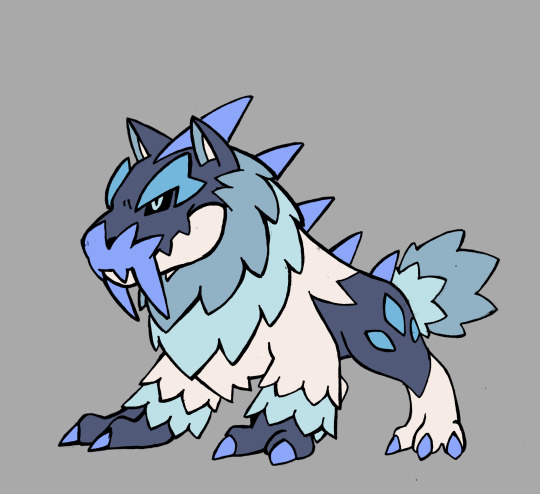
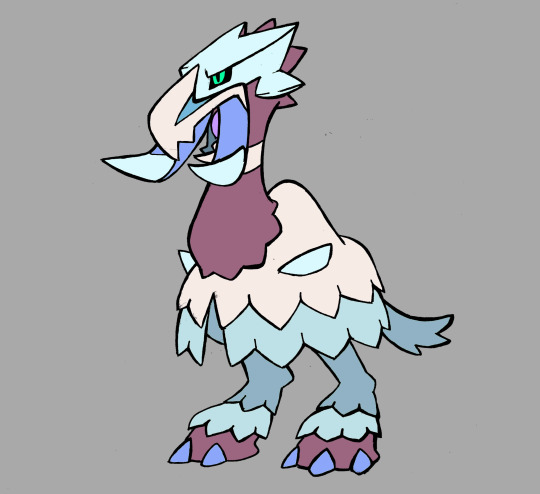
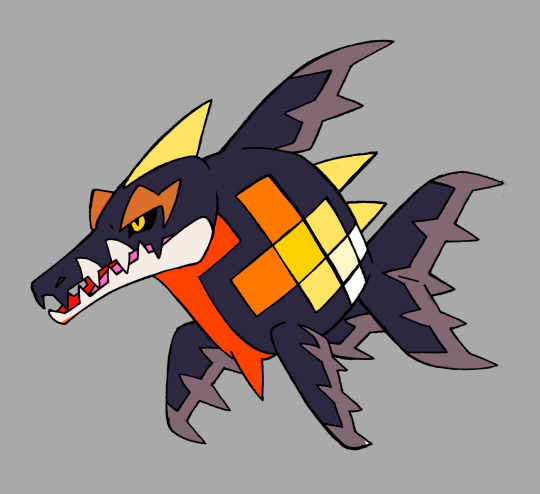
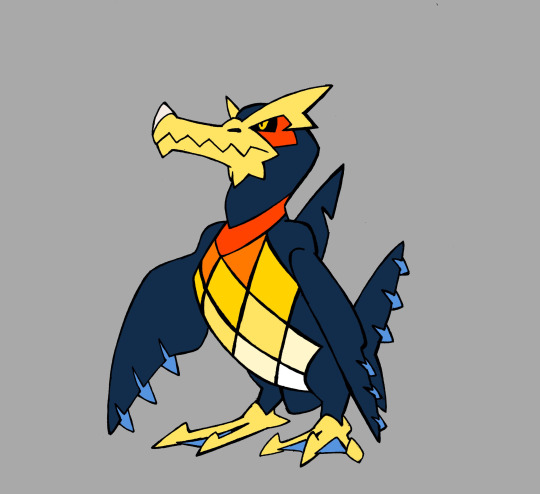
The Hybrid Fossils
This "fossils" pokemon are not revived from bones, but rather they are cloned from prehistoric blood samples, recovered from another fossil pokemon
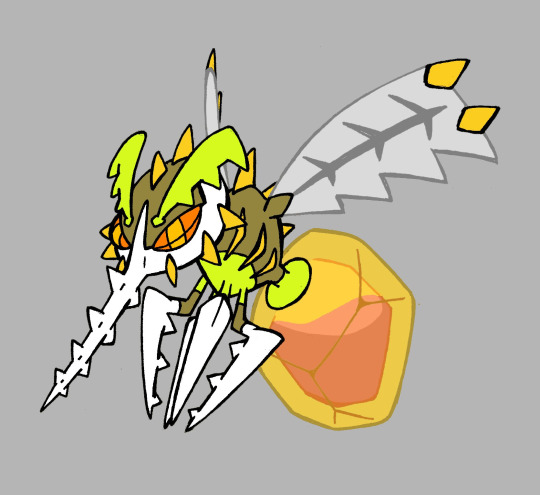
This ancient Bug/Rock pokemon can be found and revived, to extract blood samples with which you can re-create the ancient pokemons, however, the blood samples recovered from the mosquito are usually deteriorated and to create a complete DNA sequence you will need to mix 2 samples. There are 4 diferente Blood samples: Mammal (Ice), Reptile (dragon), Bird (Rock) and Fish (Water)
Mammal/Reptile becomes Ice/Dragon, it is based on the inostrancevia alexandri the largest species of Gorgonopsid
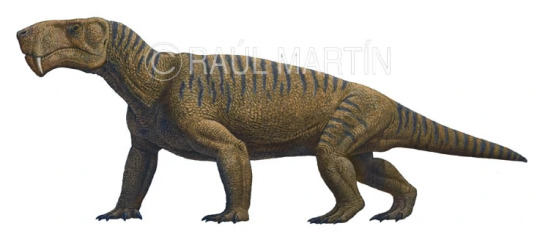
Mammal/Bird becomes Ice/Rock, it is based on the Aepyornis maximus known as the "Elephant Bird", the largest terrestrial bird that ever existed
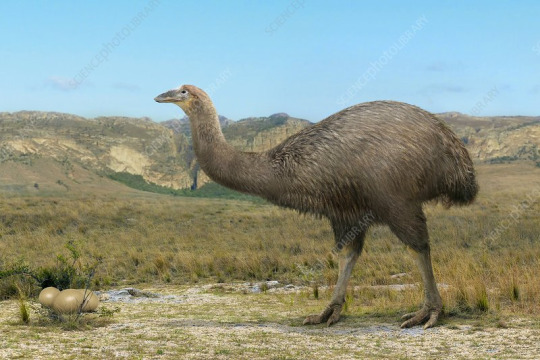
Fish/Reptile becomes Water/Dragon, it is basd on the shastasaurus sikanniensis, the largestest species of Ichtyosaurus
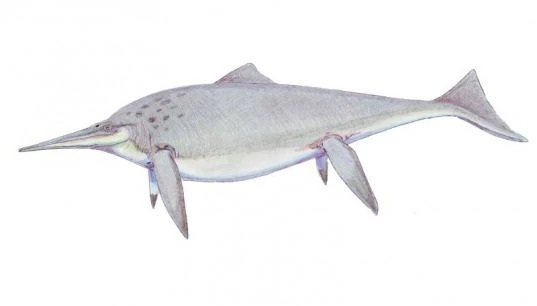
Fish/Bird becomes Water/Rock, it is based on the Palaeeudyptes klekowskii, the largest penguin to ever live
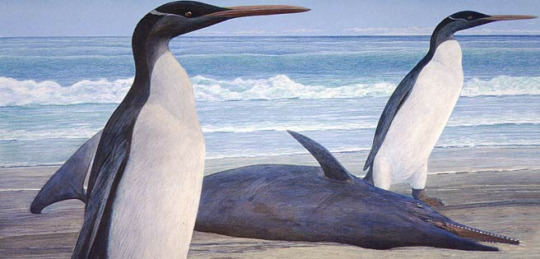
The man in charge of this experiment of prehistoric splicing is Professor Marrow, an expert on "Paleogenetic" and the one who discovered the whole process

Professor Marrow is based on a mix of John Hammond from "Jurassic Park" and Dr. Moreau from "The island of Dr. Moreau"


#Pokemon#fakemon#fake pokemon#prehistoric fakemon#fossils#fossil fakemon#amber#mutants#hybrid#pokemon professor#megafauna#dragon pokemon#dragon type#dragon fakemon#ice pokemon#ice type#ice fakemon#water pokemon#water type#water fakemon#rock type#rock pokemon#rock fakemon#bug pokemon#bug fakemon#bug type
7K notes
·
View notes
Text

The START of a comm for Aepyornis-Maximus (on FA), who's going through the process of getting a sequence of ME in some sort of Funny Cartoon Dehydrated Food + Water gag
More parts to come soon, I'm sure!
6 notes
·
View notes
Photo





A Completely Intact Egg of an Elephant Bird Aepyornis maximus
Pre-17th Century. Madagascar.
12 by 9 inches (30.5 x 22.9 cm). 10⅓ inches (26.3 cm) in diameter. 3 lbs., 15.5 oz. (1804 grams).
#A Completely Intact Egg of an Elephant Bird#bird#larget bird of all time#extinct#extinct bird#extinct species#extinct animals#nature#fossil#history#history news#ancient history#ancient artifacts
21 notes
·
View notes
Link
“Leading US palaeontologists are calling for a worldwide halt to the sale of vertebrate dinosaur fossils. The booming market for specimens, driven by their popularity with wealthy private collectors, including Hollywood stars, is pushing up prices and putting them out of reach of museums and scientists, they say.
While the art market is organised around brand-name artists, dinosaur sales are all about celebrity species, with a tyrannosaurus rex skeleton fetching up to $10m, although the velociraptor is the most prized. The price tag for a triceratops’s skull is $170,000 to $400,000, and a diplodocus is $570,000 to $1.1m. Last year a complete egg of an aepyornis maximus, otherwise known as an elephant bird, sold for $130,000 – roughly five times what it would have gone for a decade earlier.
Jerry Smith, an expert in the evolution of freshwater fishes in the department of zoology at Michigan University, told the Observer: “When specimens go into a private home or collection, our understanding, interpretation or discovery of new information they contain will never reach the scientific community.”
Last year the US Society of Vertebrate Palaeontology (SVP) called on the Parisian auction house Aguttes to cancel a sale inside the Eiffel tower that contained just one lot: a 29-foot-long dinosaur of a yet-to-be identified species. The winning bidder paid $2.3m for the piece.”
#Palaeoblr#Palaeontology#Fossil market#Fossil trade#Fossils#News#Info#Information#Article#SVP#Society of Vertebrate Palaeontology#Photo#Skeleton#Dinosaurs#Prehistoric#Mesozoic#Extinct
423 notes
·
View notes
Text
О бедном киви замолвите слово
Нет, в этой статье речь пойдёт не об экзотическом фрукте, а об очень интересной птице, заметно отличающейся от своих “собратьев” по классу.

У птиц само строение тела и физиология подготовлены к самой важной функции - полёту. Однако киви настолько не приспособлен к полёту и ведёт такой образ жизни, который кажется противоестесственным для птицы вообще.
В книге зоолога Тима Беркхеда (Tim Birkhead) “BIRD SENSE. What It's Like to be a Bird” автор так описывает нашего героя:
“когда птица уже лежит у тебя на коленях, вдруг понимаешь, как диковинно она выглядит. Льюису Кэрроллу понравился бы киви, это воплощенное зоологическое противоречие: больше похож на млекопитающее, нежели на птицу, с роскошным волосовидным оперением, комплектом удлиненных осязательных щетинок и длинным, очень чутким носом”.
Итак, с киви начинаем серию небольших статей, посвященных т.н. бескилевым (Paleognathae) или нелетающим птицам (новонебные и бескилевые разделились на две независимые группы ок. 100 млн. лет назад), к которым относят 5 отрядов из 57 современных видов:
- кивиобразные
- страусообразные
- нандуобразные
- казуарообразные
и тинамуобразные

Моа вымерли к началу XIX века.
Утрата способности к полету и переход к наземному образу жизни - вторичный признак, т.е. ранее эти птицы могли летать, но в связи с изменением условий обитания эволюционно утратили это свойство. Только тинаму способны подняться ненадолго в воздух, но активным полетом это не назовешь. Да, встречаются и другие виды среди птиц, которые тоже не летают (все мы помним про пингвинов), так что у данной группы есть и другая особенность, а именно - строение нёба. А теперь специфическая информация:
Дромеогнатизм: у такого черепа нёбные и крыловидные кости соединены неподвижно, сошник крупный, его передний конец сливается с нёбными отростками костей верхней челюсти, а задний конец расщеплён и соединяется расходящимися концами с нёбными и крыловидными костями. Длина костного нёба в ��ромеогнатическом черепе неизменна, продольные перемещения сильно ограничены. Неподвижное соединение не позволяет манипулировать с кормом, оно способно только для амортизации толчков и простых хватательных движений. Все бескилевые обладают именно дромеогнатическим типом черепа.
Вот этот рисунок мне очень нравится, он как раз показывает различия в строении черепа между этими двумя большими группами птиц:
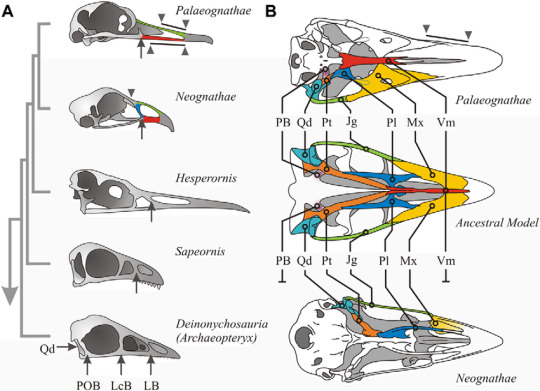
Но вернёмся к нашему киви (лат. Apteryx). Это эндемик Новой Зеландии, включает 5 сохранившихся видов, ареал распространения которых на территории этой страны представлен ниже:
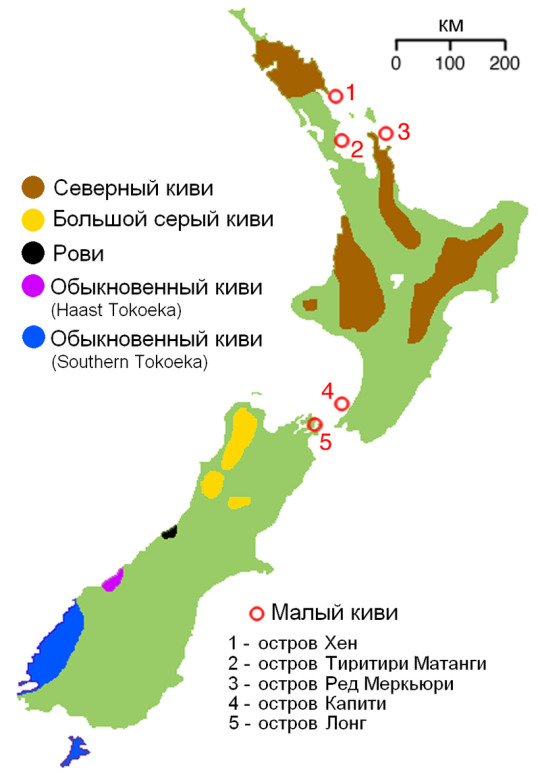
На карте указано 2 подвида обыкновенного киви (A.a. australis Shaw и A.a. lowryi Rothschild), а пятый вид киви, малый или киви Оуэна, встречается только на маленьких островках типа о. Капити.
Киви живут во влажных вечнозеленых лесах и ведут скрытный, преимущественно ночной образ жизни. Днём прячутся в норах или дуплах деревьев.
Эта птица, как я уже писал, не умеет летать но только быстро бегает по земле, постоянно вынюхивая своим длинным клювом, на концах которого расположены ноздри, прячущихся в подлеске насекомых или плоды/семена кустарниковых растений. А вот пьют киви мало. Добытой из фруктов жидкости им вполне хватает, что позволяет им выживать в довольно засушливых районах Новой Зеландии.
youtube
Кстати, своё название киви получили благодаря издаваемым ими звукам “кии-ви-кии-ви”.
youtube
Ночью киви охотятся и обходят свой гнездовой участок, а днём возвращаются в свои глубокие норы, обычно расположенные под корнями деревьев. Вход в такую нору “хозяева” маскируют листьями и травой, а выходов из неё несколько. Самки киви вынашивают всего лишь одно яйцо, однако оно очень крупное и составляет не менее 1/4 от массы взрослой птицы. В последние дни вынашивания киви даже не може�� есть, т.к. желудок придавливается яйцом к грудной клетке. Однако выполнив свою миссию, самка передаёт эстафету самцу, который занимается насиживаем яйца на протяжении 2,5-3 мес. Птенец рождается с оперением и начинает самостоятельную жизнь, в то время как родители переселяются в другую нору. При такой низкой ответственности неудивительно, что до 90% птенцов погибают в возрасте до 6 мес., становясь жертвами хищников.

Взрослым киви становится к 5 годам, а живёт до 50-60 лет. И это в дикой природе! К сожалению, завезенные человеком кошки, собаки и горностаи значительно сокращают популяцию этих удивительных созданий, 3 вида занесены в “Красную книгу”. На руку хищникам играет и специфический “грибной запах” птиц. Биолог Джим Бриски (Jim Briskie) из Университета Кентербери в Крайстчерче даже намеревался создать дезодорант специально для киви.
"Down the line, if we do find some species are particularly smelly or vulnerable, perhaps I can design a deodorant for kiwis," he told the Dominion Post newspaper.
Не знаю, увенчалась ли его инициатива успехом или нет.
Напоследок, несколько интересных фактов:
1. Крылья у киви есть, но размеры их составляют всего лишь 4-5 см, и они хорошо скрыты под толстым оперением, напоминающим по структуре шерсть.
2. У киви самая низкая температура среди птиц (средняя тепература у “��ернатых” - 42 °C ), и она составляет 38 °C.
3. Киви - рекордсмен по размеру яиц (относительно тела). Кроме того, яйца содержат очень большое количество желтка (до 65%). Это наибольшее содержание желтка среди яиц остальных птиц.
4 - Основной вид чувства у киви - обоняние. Это очень нетипично для птиц, которые обычно полагаются на зрение и слух. Кроме того, у основания клюва располагаются вибриссы, органы осязания, как у многих млекопитающих.
4. У самок киви функционируют оба яичника, для большинства птиц характерен один левый функционирующий яичник.
5. Кости скелета киви не пневматические, т.е. не имеют воздушных полостей.
6. Генетически киви наиболее близок страус эму, а ближайший родственник - вымершая слоновая птица из о. Мадагаскар (Aepyornis maximus), которая достигала в высоту 3 метров при весе до 450 кг. При этом сам киви весит ок. 4 кг.
7. Киви - один из национальных символов Новой Зеландии. Да и самих новозеландцев в шутку называют так.
8. Это фрукт из-за своей формы плодов назван в честь птицы а не наоборот.
Ну и для разгрузки мозгов смотрим клип британского певца Гарри Стайлза (Harry Styles) “Kiwi”:
youtube
Спасибо за внимание! Жду вопросов и предложений в комментах.
15 notes
·
View notes
Photo




Prehistoric Animals and Plants
by Josef Beneš illustrated by Zdeněk Burian 1979
Phororharcos inflatus (The avian world)
Aepyornis maximus (The avian world)
Hyaenodon horridus (The first successful mammals)
Oxyaena lupina (The first successful mammals)
187 notes
·
View notes